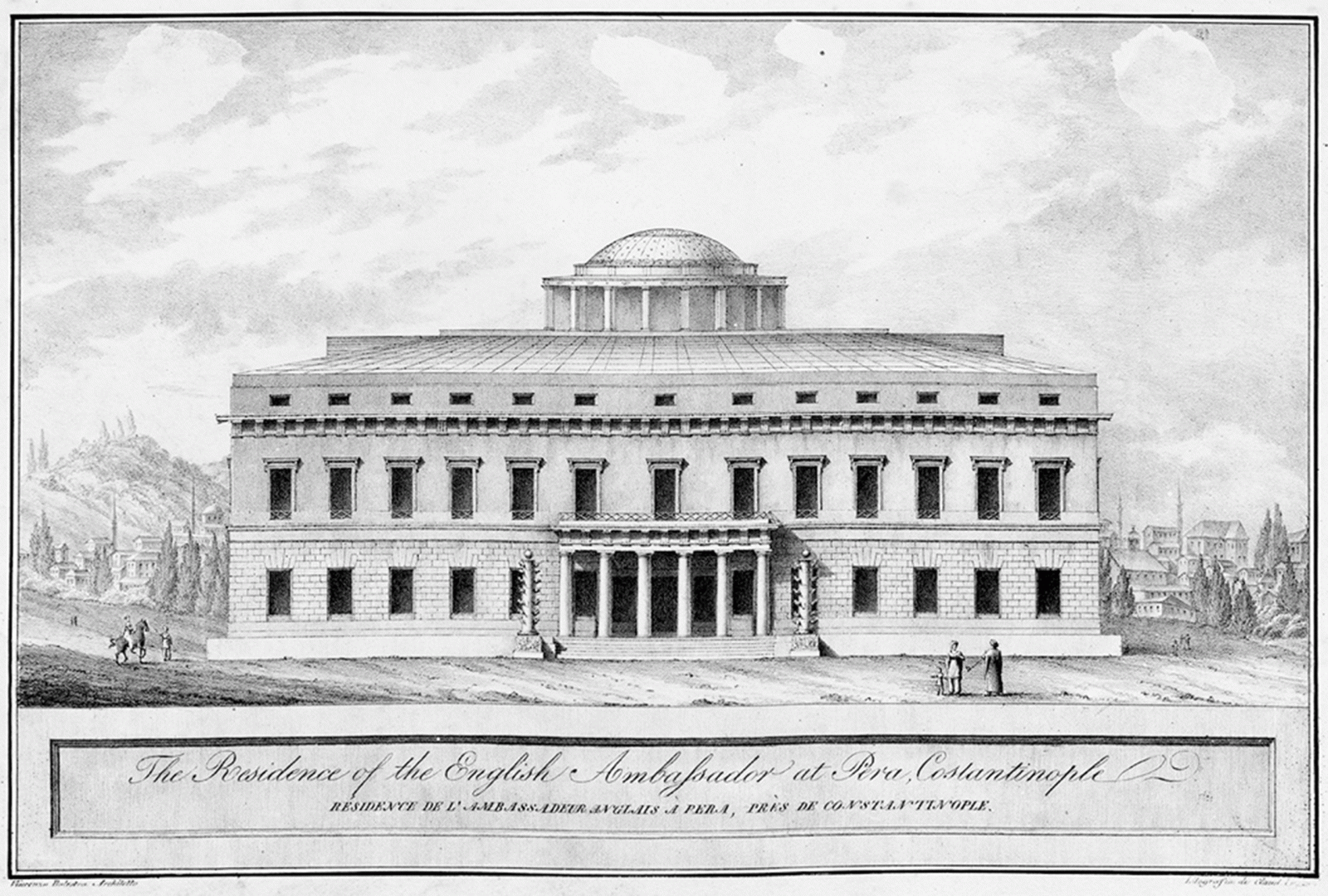Conferenza serale
Paolo Girardelli: Classicism out of context? Lord Elgin and the architecture of diplomacy in Pera

As an ambassador to the Ottoman capital between 1799 and 1803, Lord Elgin is most famous for his patronage of the archeological enterprises resulting in the acquisition, by the British Museum, of the much-debated Athenian marbles. Less known is the fact that Elgin acted as a patron of architecture during his mission in Istanbul, and struggled to implement in Pera (the district of diplomacy in Istanbul) the project of a neo-classical British embassy, based on his own country mansion at Broomhall, designed by Thomas Harrison. The architect entrusted for the project in Pera was Vincenzo Balestra, a member of the team of artists working on the Acropolis. Elgin never resided in the new palace, as this was not completed before the end of his mission. He used instead an equally symbolic and political landmark: the neo-classical Palais de France, rebuilt in 1774 by ambassador Saint-Priest, and requisitioned by the Ottoman authorities in 1798, after the Napoleonic invasion of Egypt. Both structures were destroyed by the 1831 fire of Pera, but the place they had in the social and cultural landscape of Pera can be assessed with the aid of archival materials, literary narratives, and recent critical literature. While at first sight nothing could be more "out of place" than the reproduction of a neo-classical Scottish mansion in the capital of the Ottoman empire, this lecture explores and evaluates the manifold connections of Elgin's experience in Istanbul with a local and with a cosmopolitan architectural culture, highlighting synergies and tensions between different understandings of space, style, material culture, and representation.
Paolo Girardelli (Assoc. Professor, Boğaziçi University) is an art and architectural historian, working especially on European and non-Muslim presence in the late Ottoman cities. He completed his PhD at the University of Naples in 1996, with a dissertation on the Italian presence in the urban and architectural history of late Ottoman Istanbul. He was Aga Khan Fellow at MIT in 2005-06, chercheur invité at the Institut national de l'histoire de l'art (INHA, Paris) in 2013, and Senior Fellow at Koç University, Research Center for Anatolian Civilizations, in 2015-16. His publications and graduate seminars focus on the relation between space, visuality, diplomacy, religion and communal identities in the multi-cultural contexts of the Eastern Mediterranean. He contributed since 2000 to the development of a Graduate Program of studies in Art and Architectural History and Visual Culture in the History Department of Boğaziçi University, his current affiliation. In this context he also participated to the J.P. Getty Trust "Connecting Art Histories Initiative".
17 maggio 2016, ore 18:00
Kunsthistorisches Institut in Florenz
Max-Planck-Institut
Palazzo Grifoni Budini Gattai
Via dei Servi 51
50122 Firenze
Avviso
Questo evento viene documentato fotograficamente e/o attraverso riprese video. Qualora non dovesse essere d’accordo con l’utilizzo di immagini in cui potrebbe essere riconoscibile, da parte del Kunsthistorisches Institut in Florenz a scopo di documentazione degli eventi e di pubbliche relazioni (p.e. social media) la preghiamo gentilmente di comunicarcelo.


